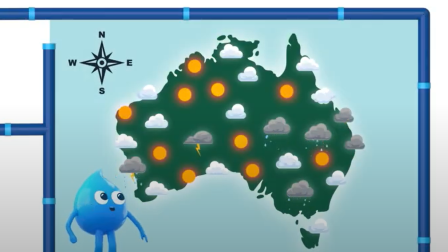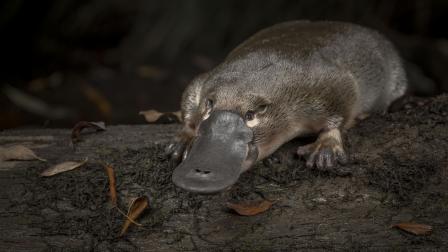The water cycle, or the hydrologic cycle, describes the continuous movement of water around the Earth.
Learn about the key processes of the water cycle evaporation, transpiration, condensation, precipitation, infiltration and run-off. Find out how this cycle has been altered by building dams and reservoirs that store water, that is then piped into taps to supply water to people.
Water is a finite resource and find out what you can do to protect this resource so there is enough water for everyone.
Learning outcomes
- Explain how water can be a liquid, solid or gas using the natural water cycle
- Understand the different uses of water and that wastewater can be recycled
- Identify where tap water comes from and know what happens when it goes down the drain
- Know that a safe and secure supply of water; as well as treatment of sewage/ wastewater is important for people and animals
Things to think about
- Have you ever wondered where your water comes from?
- What might you have in common with dinosaurs?
- List the things you can do to use less water.
Activities
Activity 1
Draw a mind map showing how you use water in your everyday life. Think about if there was less water accessible to you. How would this change your water use? Add this to your mind map.
Activity 2
Monitor the water levels in your local dam/s. Write down how much water the dam can store and how much is being stored. If there is more than one dam, write down each dam’s details.
Activity 3
Watch the Water, weather and climate video and then create a poster, a song, slideshow or performance to encourage the school community to conserve and use less water.
Teacher toolbox
Download these worksheets and diagrams to use in your classroom.
Victorian Curriculum
Science: VCSSU041, VCSSU046, VCSSU047, VCSSU059, VCSSU062
Geography: VCGGC082
You may also like...
The Story of Water: Wastewater treatment
When wastewater leaves homes and businesses it is piped to a sewage treatment plant. Learn more about what happens next.

The Story of Water: Water and waterways
A network of stormwater pipes has been built across our cities to remove this excess water when it rains. Learn more.

The Story of Water: Water, weather and climate
The amount of water in our environment is influenced by the type of climate. Across Australia, there are six broad climate zones. Climate is the average weather conditions of a place for a long period of time, while weather is the...

Help make litter extinct
As Melbourne grows, the amount of litter does too. Together, let’s make litter extinct!

Waterbug monitoring
Waterbugs let us know how healthy our waterways are - and you can too, by monitoring your local macroinvertebrates.

Water quality monitoring
Volunteer as a Waterwatch water quality monitor, and collect data to help your local river or creek.

Platypus monitoring
Help us better understand this elusive animal by reporting platypus sightings.




